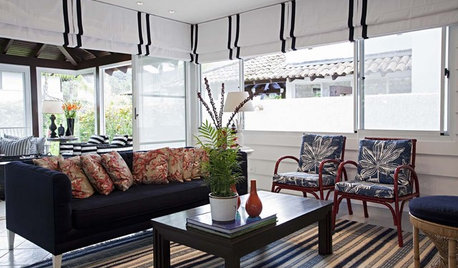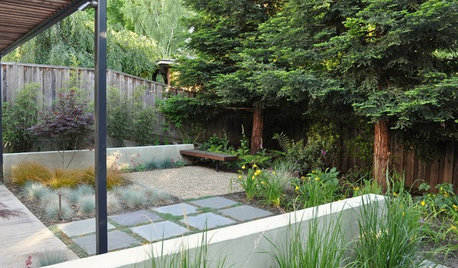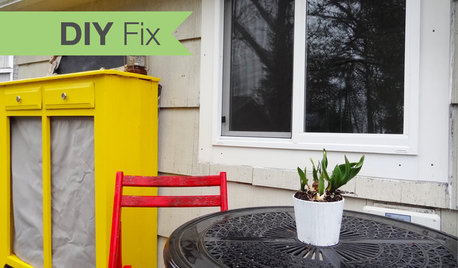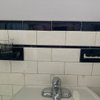ideas on reducing heating bills...
norsk
19 years ago
Related Stories

HOUSEKEEPINGLower Your Heating Bills With Some Simple Weather Stripping
Plug the holes in your house this winter to make sure cold air stays where it belongs: outside
Full Story
GREEN BUILDINGHouzz Tour: Passive House in Vermont Slashes Heating Bills
Its ecofriendly, low-maintenance design leaves a family with more time to relax and enjoy the weekend home
Full Story
MOST POPULAREasy Green: 23 Ways to Reduce Waste at Home
Pick from this plethora of earth-friendly ideas to send less to the landfill and keep more money in your pocket
Full Story
WINDOW TREATMENTS7 Window Treatments That Can Lower Your Energy Bills
Beautify your windows, keep your home cool and reduce energy use all at once with the right covering
Full Story
GARDENING AND LANDSCAPINGSmart Landscaping Slices Energy Bills
Reduce heating, cooling and water costs beautifully with these ecofriendly strategies for landscape design
Full Story
GREEN BUILDINGInsulation Basics: Heat, R-Value and the Building Envelope
Learn how heat moves through a home and the materials that can stop it, to make sure your insulation is as effective as you think
Full Story
Replace Your Windows and Save Money — a How-to Guide
Reduce drafts to lower heating bills by swapping out old panes for new, in this DIY project for handy homeowners
Full Story
FLOORSFloors Warm Up to Radiant Heat
Toasty toes and money saved are just two benefits of radiant heat under your concrete, wood or tile floors
Full Story
HOUSEKEEPING5 Steps to Improve Your Heating System Now
Increase your heater's efficiency and safety for lower energy bills and greater peace of mind this winter
Full Story
GREAT HOME PROJECTSHow to Add a Radiant Heat System
Enjoy comfy, consistent temperatures and maybe even energy savings with hydronic heating and cooling
Full Story






foxykitten350234
rjoh878646
Related Discussions
How do I reduce heat from block wall?
Q
Reducing electric bill by increasing power factor?
Q
insulation help- trying to lower heating bill cheaply
Q
exterior skylight shades? trying to reduce heat gain...
Q
prettyphysicslady
norskOriginal Author
earthworm
kframe19
brickeyee
prettyphysicslady
BreakerOff
cynthia_gw
bry84
tandaina
Lotsoideas
bry84
tryinbrian
Jane_the_Renovator
jersey_jeff
energy_rater_la
sunrochy
brickeyee
corgilvr
energy_rater_la
Rainbow1
michorion
ttodd
kframe19
Bonilyn
prettyphysicslady
Debbie Downer
schoolhouse_gw
kframe19
ttodd
energy_rater_la
fredwolf
kframe19
prettyphysicslady
kframe19
DruidClark
jfink2000
spambdamn_rich
dave100
wangshan
bmmalone
norskOriginal Author
sharon_sd
drywall_diy_guy
fsq4cw